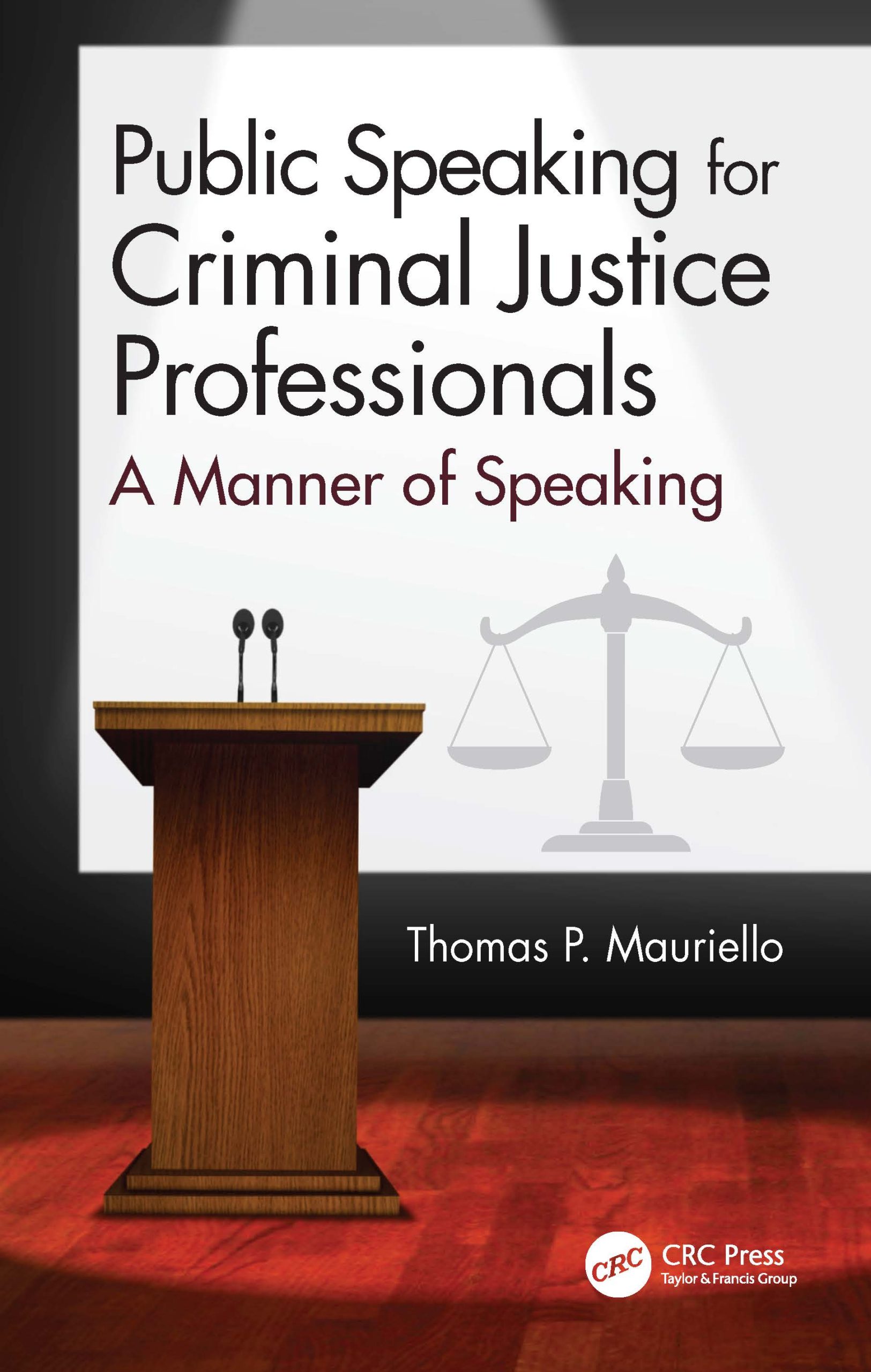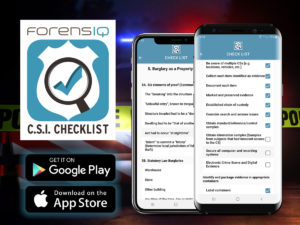Forensic Psychologists Can Provide Supporting Evidence In Court
Forensic psychologists, particularly in the city of Chicago, may be summoned to court to provide clinical assessments and other supporting evidence that can essentially resolve disputes and accelerate decision-making in complex family cases. Forensic psychology combines the disciplines of forensics and psychology to provide both objective and independent assessments to questions and issues concerning law and the legal system. With this in mind, forensic psychologists can assist families in court by providing assistance with child custody, assessments of addictive disorders, psychotherapy and rehabilitation, and forensic psychology and financial distress.
Interested in reading more about forensic psychologists? Click here for the full article!
Source: Forensic Nexus
[Abstract written by Noel Andres, ForensIQ Intern 3/6/14]
3D FingerPrinting
Anil Jain and a team of Michigan State University computer scientists and research collaborator Nick Paulter at the National Institute of Standards and Technology built the first three-dimensional model of a fingerprint. What they develeoped was a method that takes a two-dimensional image of a fingerprint and maps it to a 3D finger surface. It has all the ridges and valleys of the human fingerprint and its made using a 3D printer. They call this a fingerprint “Phantom.” This technology gives a “precise fingerprint model with known properties and features that can be used to calibrate existing technology used to match fingerprints.” This could improve the accuracy in fingerprint sensing and matching.
Anil Jain’s Technical Report on 3D Fingerprint Phantoms
Click here for full article
Source: Michigan State University
[Abstract written by Alicia Terrell, ForensIQ Intern, 030614]
Fun Crime Scene Cheat Sheet Infographic
This infographic gives a quick visual representation of the different types of crime scene professionals and the work each must contribute to collectively solve a crime. Quickly yet clearly, this inforgraphic summarizes some of the key concerns and uses of evidence found at a crime scene by giving brief descriptions on: how to lift fingerprints, suggesting clues to look for while estimating the time of death, the use of forensic entomology, analyzing DNA profiling and bloodstains patterns, and describing the process of how an autopsy is completed. Do not substitute this crime scene cheat sheet infographic for training, but use it as a guide for recalling tips and advice of the different types of crime scene professionals and their work.
Click here to view the fun crime scene cheat sheet infographic!
Source: Forensic Nexus
[Abstract written by Noel Andres, ForensIQ Intern 3/6/14]
DNA Evidence Solves Boston Strangler Cold Case
In January of 1964, Marry Sullivan was raped and murdered shortly after moving to Boston. Her murderer was not found, however Alberto DeSalvo, known as the Boston Strangler, admitted to murdering her and 10 other victims. He later went back on his confession and left room for doubt in the case. Almost 50 years later, DNA evidence surfaced that would put an end to all doubts and solve the case.
Click here to read the full article.
[Abstract by Walter Tates, ForensIQ Intern. 030614]
Study Shows How Dogs are Trained to Detect Explosives
Training a dog is no easy feat. Training a dog to detect explosives is considerably much more difficult. This article overviews a study conducted by Indiana University-Perdue University Indianapolis that explored the method used to train police dogs and determine its effectiveness. With the results of the study, options can be discussed on what can be done to make canine detection legally admissible evidence in court.
Click here to view the article.
[Abstract by Walter Tates, ForensIQ Intern. 030614]
The ForensicWeek.com Show – “Unsolved Histories – The Roots of Forensic Genealogy,”
| ForensicWeek.com is airing Episode 53 this Thursday, March 6, 2014 at 7:00 PM (EST). The topic for discussion is “Unsolved Histories – The Roots of Forensic Genealogy,” with special guest, Dr. Colleen Fitzpatrick, Forensic Genealogist, author and consultant for Identifinders, Huntington Beach, CA. Forensic genealogy has established itself as the modern approach to family research and finding the “right” people for the legal profession, and for law enforcement. It does not replace conventional methods for finding people, it enhances them. So join host, Tom Mauriello, LIVE and archived on www.ForensicWeek.com and learn about this fascinating field of forensic science. Thank you for watching!
|
Legal Professionals – Spend Two Days Learning the Essentials of Forensic Science
WVU Forensic Science Initiative, in collaboration with the National Institute of Justice, will host a free two-day program entitled, Essentials of Forensic Science for Legal Professionals, for legal professionals to expand their understanding of forensic science topics. The program will be held March 11 – 12, 2014, on the West Virginia University Campus in Morgantown, WV. Interpretation of physical evidence, wrongful arson conviction, bias in forensic science evidence, and basic statistical concepts in forensics are a few of the topics that will be discussed. Members of the academic community, lab personnel, and legal specialists will instruct and apply real-world examples to the content presented in this two-day program.
Register now to attend the free Essentials of Forensic Science for Legal Professionals Program. The first 20 individuals to register will receive a free hotel stay while attending the two-day training program! Registration closes March 3, 2014, 5:00 p.m. ET.
For more information about the program and to register now click here!
Source: West Virginia University
[Abstract written by Noel Andres, ForensIQ Intern 2/27/14]
Nile Blue Improves Crime Scene Fingerprinting
West Australian chemists, at Curtin University, are developing a new technique that could provide crime investigators with a safer, simpler and more versatile method for obtaining good quality fingerprints from non-porous surfaces and in wet or humid conditions.
The compound Nile red is presently used, providing investigators with both contrast and photoluminescence, making it easier to detect fingerprints on non-porous materials. Although proven useful, Curtin University’s Professor Simon Lewis states that this is expensive and the process uses toxic materials that pose health and safety risk to personnel. Professor Lewis’s team of researchers have found that when the compound Nile blue A is made up in water, a small amount converts to Nile red in sufficient quantities to develop fingerprints. Nile blue A is a less expensive reagent and can be used on non-porous surfaces like ceramic, glass, plastics, and adhesive tape.
Professor Lewis also states that while more work needs to be done, testing shows great potential for the new process, particularly in staff training and for use in developing countries. The main objective of his Australian research team is to improve crime scene fingerprinting by finding a way to obtain clear prints from different surfaces and extracting clear prints in wet or humid conditions.
Interested in reading more about improvements in crime scene fingerprinting? Click here!
Source: Science Network Western Australia
[Abstract written by Noel Andres, ForensIQ Intern 2/27/14]
First-ever Application of Rapid DNA Technology
The Palm Bay Police Department in Florida was the first to use Rapid DNA technology in a criminal investigation. The DNA profiles were obtained from California based IntegenX’s RapidHIT 200. It is one of two stand-alone devices available in the world that can produce DNA profiles in less than 90-minutes. In January 2014, the Criminal Investigations Division (CID) began processing samples from active criminal cases. The results from the RapidHIT 200 were compared to those from a lab and more than 100 samples matched. The Palm Bay PD is now using the RapidHIT 200 weekly. Chief Doug Muldoon of the Palm Bay PD is very satisfied with the technology saying “The ability to solve selected crimes in less than a day is essential to protecting the public.”
Click here for full article
Source: Space Coast Daily
[Abstract written by Alicia Terrell, ForensIQ Intern, 022714]
Packaging Evidence
In the process or collecting evidence, it is of crucial importance to store and package it properly. If packaged incorrectly, the evidence can be damaged, destroyed, or compromised. Knowing how to store specific types of evidence so that they may be transported from crime scene to crime lab can make the difference between having useless evidence, and evidence that can be helpful in an investigation. This article gives tips and guidelines on how to properly package various types of evidence, ranging from DNA and blood evidence to physical evidence such as liquids, powders, and weapons of various natures.
Click here to view the full article.
[Abstract by Walter Tates, ForensIQ-Inc. Intern.]
The ForensicWeek.com Show airing Episode 52 – Exposing Junk Science in the Courtroom
| ForensicWeek.com is airing Episode 52 this Thursday, February 27, 2014 at 7:00 PM (EST). The topic for discussion is “Exposing Junk Science in the Courtroom.” Their special guest is, Dorothy Clay Sims, attorney and author of the book, “Exposing Deceptive Defense Doctors,” who has spent over a decade teaching lawyers tips on exposing bad experts. Ms. Sims is also retained in criminal cases to assist the defense attorney in cross-examining the state’s forensic expert, as she did most recently in the Casey Anthony case. So join host, Tom Mauriello, LIVE or view the recorded show archived on www.ForensicWeek.com . Thank you for watching!
|
“Why some people don’t have finger prints”
It’s always been a thought that someone who wasn’t born with fingerprints could commit the perfect crime. But how could this rare condition happen? Dermatologists refer to this condition as “immigration delay disease”. This is because it causes problems when the person tries to move to a different country. But the scientific term is adermatoglyphia. For years this phenomenon was not understood till a couple of years ago when dermatologist figured out that this was related to a genetic mutation. This was discovered two dermatologists studied a Swiss woman with the condition. Come to find out this was a condition that ran in her family. The dermatologist found that this was caused by a section of DNA that codes for protein. This mutated gene blocks the protein from forming. People who have this disease only have symptoms of having no fingerprints and fewer sweat glands. Without this rare family researchers may have never discovered the cause.
Click here for full article
Source: Mother Nature Network
[Abstract written by Alicia Terrell, ForensIQ Intern, 021914]
New Technology uses Body Odor for Identification
In Spain, scientists have created an “electric bloodhound” that can smell out individuals based on identifying qualities. They say that there are patterns that are recognizable in humans. These patterns are steady therefore everyone has their own odor that would separate them from others. These scientist claim that this technology is so correct that it could replace things like fingerprinting or iris scanning. This would be a less aggressive and less intrusive way for personal identification. This type of technology could be used in places like airports or borders checkpoints where the only identify verification are based on physical resemblance from a photo.
Click here for full article
Source: Washington Times
[Abstract written by Alicia Terrell, ForensIQ Intern, 021914]
Research Grant Awarded to Evaluate Footwear Evidence
Jacqueline Speir, Assistant Professor in the Forensic and Investigative Science Program at West Virginia University, has been awarded approximately $389,000 in grant funds to conduct research that will help uncover the forensic value of footwear evidence.
The goal of this research is to better understand potential discrimination of shoe print evidence. In order to determine this, Jacqueline Speir, and her research group will collect, characterize and compare randomly acquired accidental characteristics on the outer sole of hundreds of shoes. The data collected will provide insights into how well footwear impressions deposited at crime scenes can be linked to a single shoe and a suspect.
Funded for the next two and a half years, Speir’s research group will evaluate the similarities of accidental patterns present on shoes and the reported impressions left during the commission of a crime, as well as between impressions collected from different shoes. This research is exceptionally important and the findings could reveal the forensic value of footwear evidence.
To view the full article and to find out more information click here!
Source: West Virginia University
[Abstract written by Noel Andres, ForensIQ Intern 2/19/14]
“Japan and U.S. to share Criminal fingerprint database”
The United States and Japan have made an agreement on sharing fingerprint databases that would benefit criminal investigations. This database of international fingerprints will aid law enforcement authorities to prevent domestic and foreign threats. This agreement will provide Japanese authorities with data from the FBI and the Department of homeland security. Japan is the first country the U.S. has shared fingerprint databases with.
Click here for full article
Source: Japan Daily Press
[Abstract written by Alicia Terrell, ForensIQ Intern, 021914]






